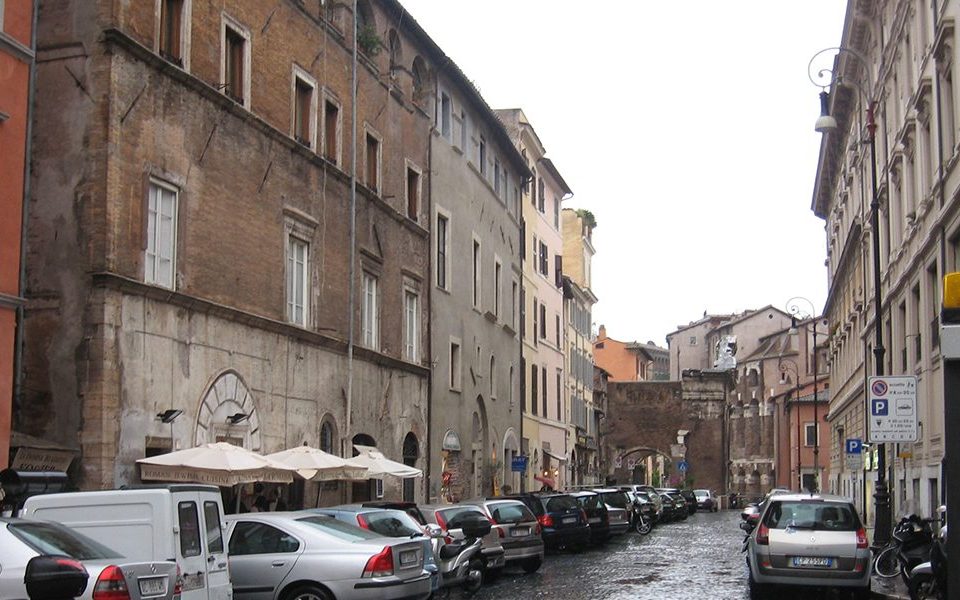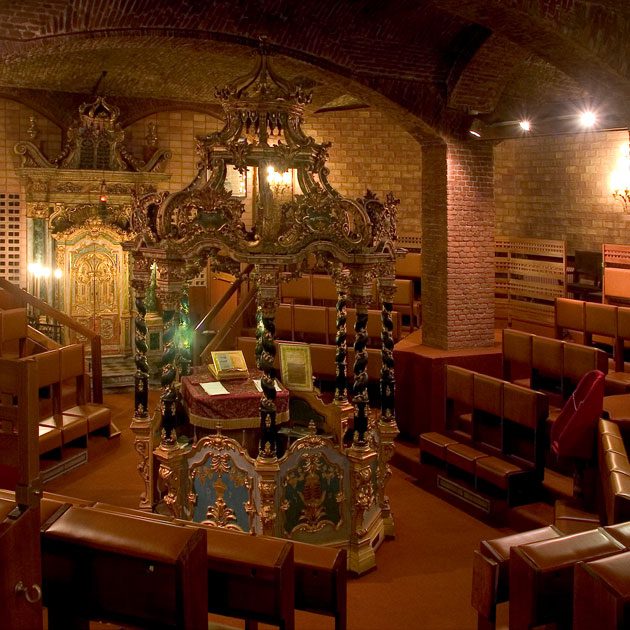The Jewish community of Turin has had a series of designated burial grounds since the 15th Century: the first was a plot near the Porta Marmorea, on the southern boundary of the city, between the present-day Via San Tommaso and Via Santa Teresa; the second, dating to mid 16th century, occupied the area comprising today’s Via Arcivescovado and Via Arsenale, from where, in the following century, it was moved to allow for the construction of an artillery foundry – later to become the Military Arsenal. In 1668 a nearby plot of land was assigned in what is today Corso Matteotti, which had to be abandoned at the time of the siege of Turin in 1706 as it fell within the remit of military confines. The cemetery was then moved to the far side of the city towards the River Po, near the bastion of Saint Jean de Dieu, where Via delle Rosine meets the present-day Piazza Cavour. In 1772 once again the king ordered the cemetery to be moved further north, to an unhealthy area prone to flooding. The surrounding neighborhood, in fact, was known as ‘borgo del moschino’ (midget land), until it was reclaimed and parcelled out, becoming what is today Borgo Vanchiglia, and lastly, in 1867, the Community was given a section of the Monumental Cemetery, where a number of ancient tombstones were relocated. Currently there are six Jewish sectors, with simple graves in the central areas and elaborate family monumental tombs along the perimeter walls.
After Emancipation, the Jewish Community decided to build a synagogue given previous limitations had been lifted. The new synagogue was intended to be imposing and celebrate the full integration of the Community in civil society and embodied the presence of the Jews in the city. A plot of land was purchased in the urban development area to the north, which had previously been occupied by the 17th-Century ramparts that had been demolished in the 19th Century. After an initial inconclusive call for tenders, the project was finally assigned to the architect Alessandro Antonelli, who began construction work in 1863. The approved design consisted in a building with a square plan and a 47-meter-high barrel-vaulted roof that could accommodate up to 1,500 people.
The monumental synagogue of Turin was commissioned by the Jewish Community following the abolition of the ghetto, to celebrate Emancipation and express gratitude to the Royal House for having granted it. After the Community sold to the City the still unfinished building that was to become the Mole Antonelliana and which never actually used as a synagogue, the Jewish community announced a competition for the construction of the new building in the newly developed district of San Salvario. The synagogue was completed in 1884 and designed by Enrico Petiti in what was known as eclectic: the prevalence of elements of Moorish architecture specified in the call speaks to one of the most widespread trends in late 19th century European Synagogue architecture.
As early as 1430 Duke Amedeo VIII had regulated the legal status of Jews, subjecting them to restrictions and heavy taxes. The ghetto was established in 1679 at the command of the Regent, Duchess Marie Jeanne Baptiste of Savoy. Within a year Jews were forced to move to the premises previously used by the Ospedale di Carità (an Alms House), which retained ownership of the building. The hospital occupied the entire block between the present-day Via Maria Vittoria, Via Bogino, Via Principe Amedeo and Via San Francesco da Paola, at the heart of the second development of the capital city, where a number of charities and medical facilities were concentrated. Inside, the space was divided in five courtyards each with its own name, connected by covered walkways known as portici oscuri (dark arcades).
The Jewish community of Turin has had a series of designated burial grounds since the 15th Century: the first was a plot near the Porta Marmorea, on the southern boundary of the city, between the present-day Via San Tommaso and Via Santa Teresa; the second, dating to mid 16th century, occupied the area comprising today’s Via Arcivescovado and Via Arsenale, from where, in the following century, it was moved to allow for the construction of an artillery foundry – later to become the Military Arsenal. In 1668 a nearby plot of land was assigned in what is today Corso Matteotti, which had to be abandoned at the time of the siege of Turin in 1706 as it fell within the remit of military confines.


